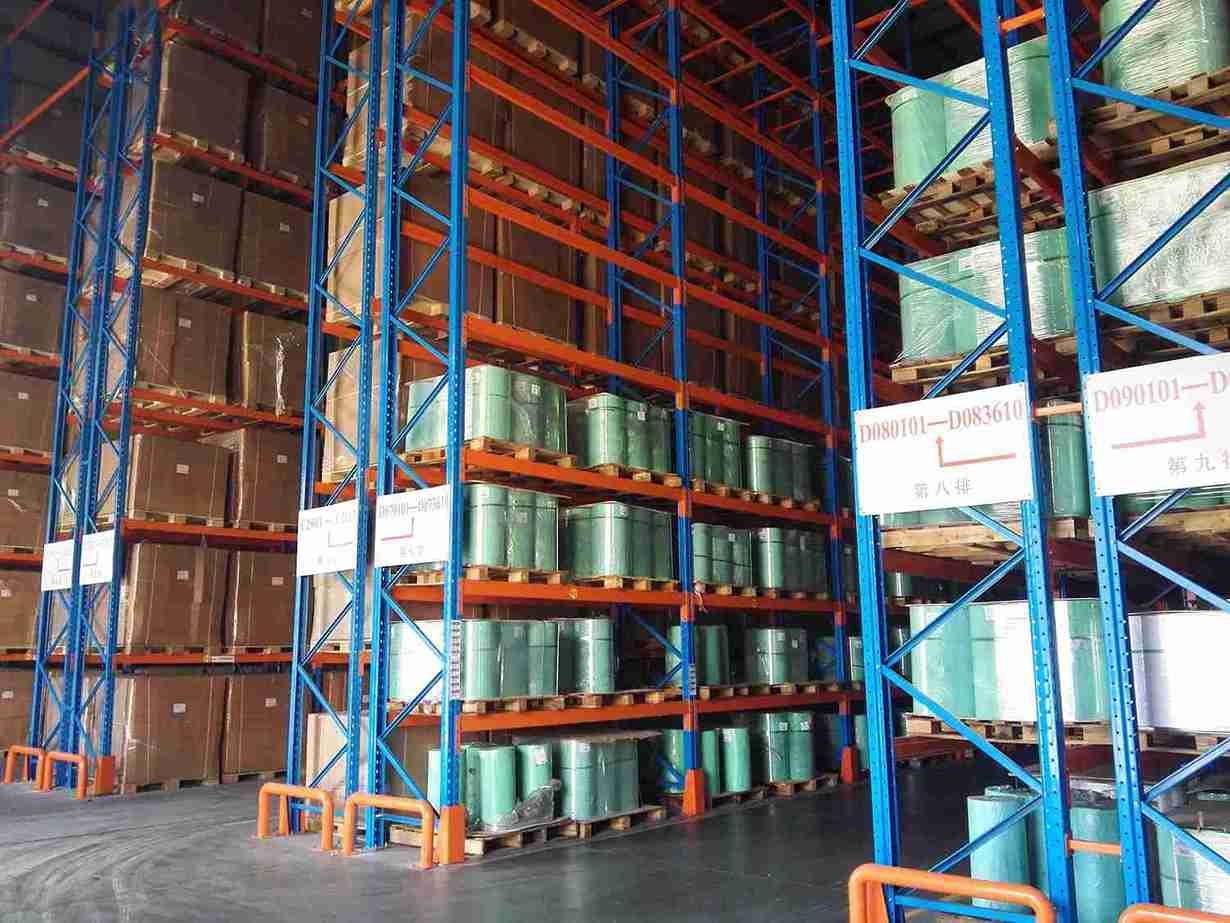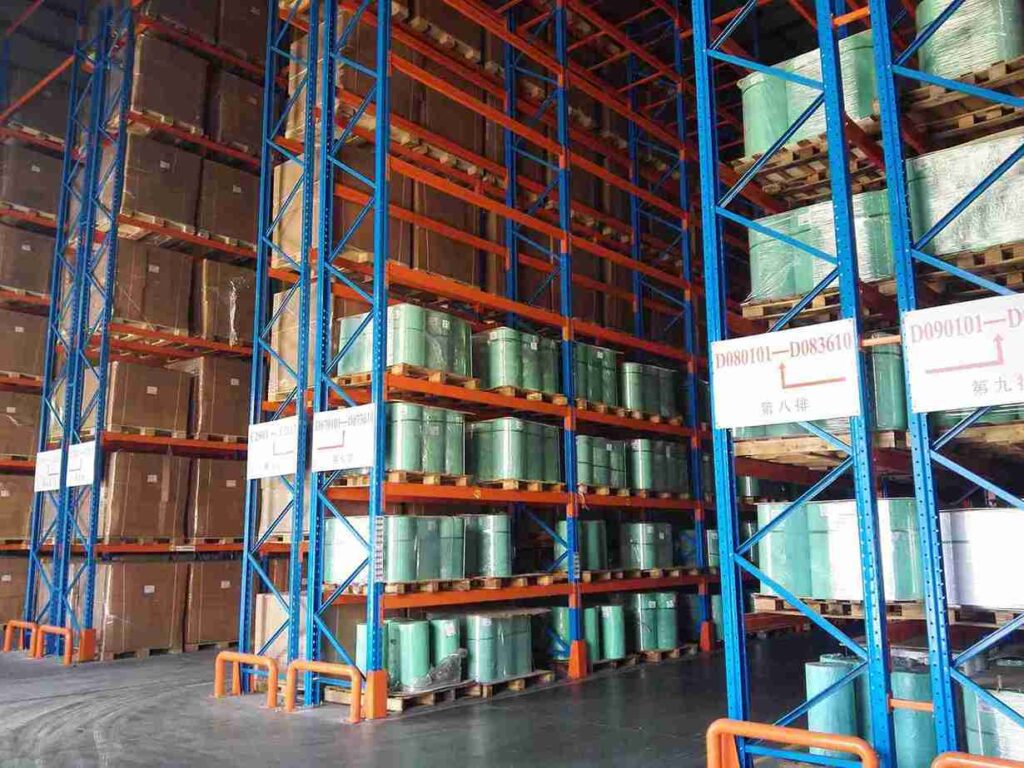📐 "First 50 Enterprise Queries Get Custom 3D Warehouse Design" Plan

Introduction: Why OSHA Racking Requirements Matter
Warehouse safety hinges on strict adherence to OSHA racking requirements. Every year, improper storage racking leads to catastrophic collapses, worker injuries, and hefty regulatory fines. Understanding and implementing OSHA pallet racking standards isn’t just about compliance—it’s about protecting employees, optimizing operations, and avoiding costly legal repercussions.
This guide dives deep into OSHA racking requirements, covering load capacities, inspection protocols, structural integrity, and enforcement consequences. Whether managing a small distribution center or a large industrial warehouse, compliance with OSHA warehouse racking regulations ensures a safer, more efficient workplace.

H1: What Are OSHA Racking Requirements?
H2: The Legal Framework Behind OSHA Racking Standards
The Occupational Safety and Health Administration (OSHA) enforces workplace safety through general industry standards that apply to storage racks. While no single regulation exclusively governs pallet racking, multiple OSHA codes intersect to ensure safe rack systems:
-
OSHA 1910.176(b) – Requires safe material storage to prevent collapses.
-
OSHA 1910.22 – Mandates stable walking-working surfaces, including proper floor loading.
-
OSHA 1910.159 – Covers fire protection near racking systems.
These OSHA racking requirements emphasize structural stability, proper weight distribution, and routine maintenance to prevent accidents.
H2: Who Must Comply with OSHA Racking Requirements?
Any business using industrial storage racks—including:
✔ Warehouses
✔ Distribution centers
✔ Manufacturing facilities
✔ Retail backrooms
Failure to meet OSHA racking requirements can result in fines up to $15,625 per violation, increased insurance costs, and potential lawsuits from workplace injuries.
H1: Key OSHA Racking Requirements for Safe Warehouse Operations
H2: Load Capacity & Weight Distribution Standards
One of the most critical OSHA racking requirements is adhering to maximum load capacities. Overloading racks is a leading cause of structural failure.
H3: How to Determine Safe Load Limits
-
Manufacturer’s Load Rating – Every rack must display its maximum capacity.
-
Uniform vs. Point Loading – Uneven weight distribution increases collapse risks.
-
Beam Deflection Limits – Excessive bending under load indicates potential failure.
H3: Common OSHA Violations in Load Management
⚠ Stacking pallets beyond rated capacity
⚠ Ignoring dynamic load factors (e.g., forklift impacts)
⚠ Failing to recertify racks after modifications
H2: Proper Installation & Anchoring Per OSHA Racking Requirements
Racks must be:
✅ Securely anchored to the floor (following ANSI MH16.1 standards)
✅ Leveled & aligned to prevent leaning or instability
✅ Protected from forklift impacts with guards or barriers
H3: Critical Installation Mistakes That Violate OSHA Racking Requirements
❌ Using non-rated bolts (must meet ASTM specifications)
❌ Skipping shims on uneven concrete
❌ Ignoring seismic zone requirements (in earthquake-prone regions)
H1: OSHA Racking Inspection Requirements: A Step-by-Step Guide
H2: How Often Should Racks Be Inspected?
While OSHA racking requirements don’t specify exact frequencies, best practices dictate:
-
Daily visual checks by warehouse staff
-
Formal monthly inspections by trained personnel
-
Professional engineering audits annually
H2: What OSHA Looks for During Rack Inspections
Key red flags include:
🔴 Bent or twisted beams (indicates overloading)
🔴 Cracked or sheared uprights (requires immediate replacement)
🔴 Loose or missing bolts (compromises structural integrity)
🔴 Excessive rust or corrosion (weakens steel components)
H3: Who Should Perform OSHA-Compliant Rack Inspections?
-
In-house safety teams (for routine checks)
-
Third-party rack safety experts (for certification & deep audits)
H1: OSHA-Approved Rack Repairs vs. Replacements
H2: When Can Damaged Racks Be Repaired?
Minor damage may be repairable if:
✔ Deflection is within manufacturer tolerances
✔ Beam connectors are intact
✔ Upright columns show no cracks
H2: When Must Racks Be Replaced Immediately?
Critical damage requiring replacement includes:
❌ Dented uprights exceeding 0.5″ deep
❌ Visible cracks in load-bearing welds
❌ Severe corrosion reducing structural strength
H3: OSHA-Approved Repair Methods
-
Beam reinforcement kits (for minor bends)
-
Column guards (for impact-prone uprights)
-
Professional welding repairs (only if certified)
H1: Best Practices for Exceeding OSHA Racking Requirements
H2: Employee Training & Safety Protocols
Workers must be trained on:
📌 Proper loading/unloading techniques
📌 Forklift clearance requirements
📌 Emergency procedures for rack collapses
H2: Warehouse Layout Optimization for OSHA Compliance
-
Minimum 8-foot aisles for forklift maneuverability
-
Clear load limit signage at every bay
-
Seismic bracing in earthquake zones
H1: Real-World Consequences of Ignoring OSHA Racking Requirements
Case studies show:
💥 $250,000+ OSHA fines for repeated violations
💥 Workers’ compensation claims from rack collapses
💥 Business shutdowns due to failed safety audits
Conclusion: Achieving Full Compliance with OSHA Racking Requirements
Strict adherence to OSHA racking requirements isn’t optional—it’s a legal and moral obligation. By implementing regular inspections, proper load management, and employee training, warehouses can prevent disasters and maintain OSHA compliance.
Need a professional rack inspection? Contact a certified expert to ensure your facility meets all OSHA racking requirements.
FAQs on OSHA Racking Requirements
1. Does OSHA require written rack inspection reports?
While not explicitly mandated, documentation is critical to prove compliance during audits.
2. Can I reinforce damaged racks myself?
Only if using engineer-approved repair kits—unauthorized modifications violate OSHA racking requirements.
3. What’s the #1 cause of racking OSHA violations?
Overloading beams accounts for 60% of citations.
4. Do OSHA racking requirements apply to used racks?
Yes, used racks must meet current load ratings and show no critical damage.
5. How often should forklift drivers be trained on rack safety?
At least annually, plus refreshers after any near-miss incidents.




